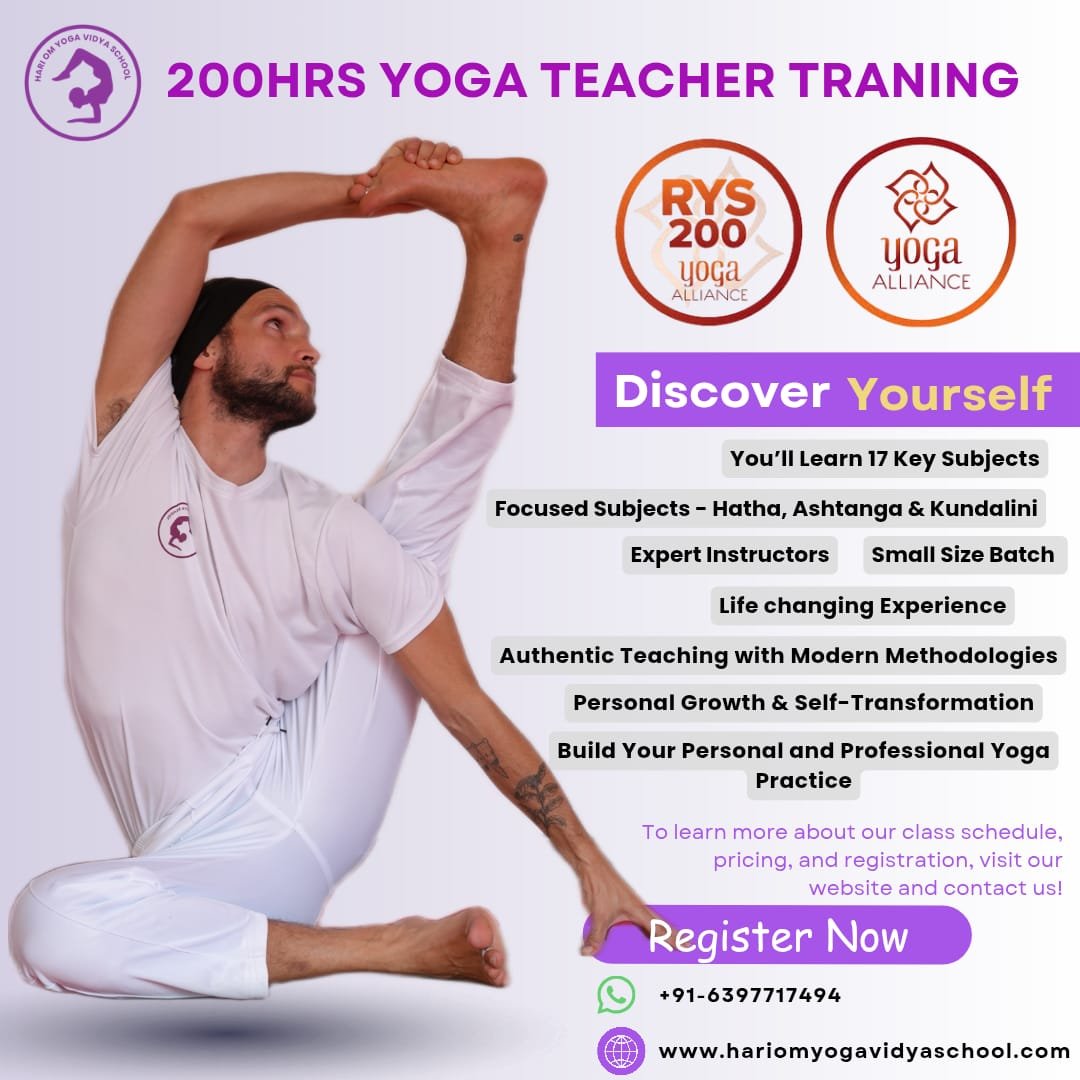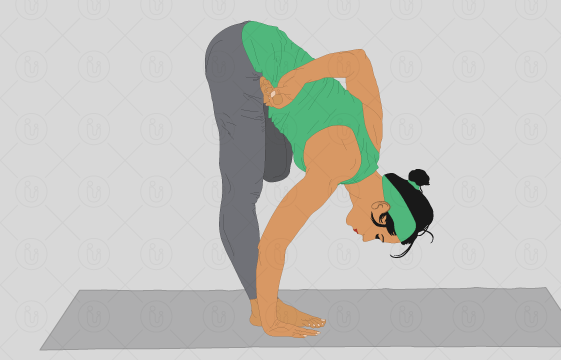Ardhabadha Padmottanasana – Half Bound Lotus Forward Bend Pose
What is Ardhabadha Padmottanasana?

Ardhabadha Padmottanasana is one of the most basic poses in Ashtanga Yoga Primary series. The Ardhabadha Padmottanasana or pose revolves around hip opening and hamstring stretching. In such asanas, the real success lies in the hips. You have to exercise a lot of patience, if you want to conquer this pose. If you try to be greedy, it can lead to an injury.
Ardhabadha Padmottanasana is a one-legged standing Forward bending asana, in which one leg will be in lotus pose, while the other leg will be straight. It is an advanced level yoga pose. Your hips, hamstrings and thighs will become a lot more flexible, if you practice this regularly.
The Ardhabadha Padmottanasana or pose name has been derived from Sanskrit verses, and can be broken down as follows:
- Ardha means ‘half’
- Baddha means ‘bound’
- Padma is ‘lotus’
- Ot refers to ‘intense’
- Tan is ‘stretch’
- Asana means ‘pose’
This pose uses all the part of the body, so you will get all-round benefits.
Read More: Why Is Kundalini Yoga Dangerous? The Truth About Its Risks and Rewards
How To Do The Asana?

- You have to start doing the asana, from the Tadasana pose.
- Inhale and then lift your right leg and stick the foot into the left side of the lower abdomen.
- Hold your big toe with the alternate hand wrapped around the back.
- Exhale and bend forward at the hip joint.
- Now, keep your left hand on the ground. You have to distribute the body weight equally on the left foot and left hand.
- Look toward the front, and take a deep breath.
- Exhale and bend your body toward the knee, with the chin touching the shins.
- Hold the pose for atleast 5-6 breaths.
- Inhale and then exhale slowly, and lift your body upward. You have to stay there for a few seconds.
- Slowly release the hands, and bring the feet down.
- Relax in Tadasana and repeat it on the other side.
Modifications and Variations
There are some yoga students, who may not be able to do the asana at the first instance, as it is an advanced level pose.
- You can use a yoga strap, wrapped around the lifted foot, and you can hold the other end of the strap, from behind, with the other hand.
- You can also use a yoga block beside the straight leg, and when you fold forward, you can rest your palm on that yoga block.
There are certain variations, which you can try while doing the Ardhabadha Padmottanasana pose.
Initially, you can refrain from wrapping the alternate hand from the back and hold the big toe. Instead, you can place both palms on the floor.
You can also do the Ardhabadha Padmottanasana, with both the hands folded in a prayer pose. Your folded foot sticks inside the lower abdomen. You have to hook it there, before leaning forward. When you are halfway down, you can fold your hands into a prayer pose.
You should breathe normally. Inhale when you lift the leg. Stay for 5 breaths in the final folded pose. Your gaze should be towards the back.
Safety Precautions Decoded
Whenever you perform advanced poses, you need to keep certain things in mind.
- You have to perform the Ardhabadha Padmottanasana or pose on an empty stomach, so early morning is best. Additionally, you can do it in th evening also, but at a gap of 4-5 hours from your last meal.
- If you are doing the asana for the first time, it is always better to start from Tadasana pose. After which you can insert the lifted foot into the abdomen.
- You do not have to force yourself, to hold the bid toe. You can start by just grabbing the elbow, by wrapping the other hand around the back.
Who Can Do This Asana and Who Cannot?
You can do the asana or pose, without any inhibitions, if you are an advanced level practitioner. Some amount of flexibility is required, for you to do this asana. On the other hand, you should note a few contraindications.
- You should not perform this asana, if you have a knee injury, hip injury, or a shoulder injury. The asana consists of stretches that might be detrimental to the healing muscles and tissues.
- If you suffer from high blood pressure, then also you should avoid the asana.
- Anyone who is suffering from Glaucoma, should avoid the pose.
- If you suffer from migraine, you need to avoid the asana.
- If you are suffering from a stomach issue, or bug, you should refrain from doing this asana.
Benefits of Ardhabadha Padmottanasana
This is a great pose or asana, that gives a through exercise to the entire body. You will get a number of advantages from this asana.
- Ardhabadha Padmottanasana improves the flexibility of the body, to a huge extent. It is a deep stretching pose that includes the stretching of the hips, hamstrings, ankles, arms, and shoulders as well. The excessive stretching of the muscles, make them flexible.
- You will also experience enhanced digestion, if you regularly practice this asana. When you fold forward, a lot of pressure is created on the abdomen. It leads to a gentle massage of the digestive organs.
- When you do this pose regularly, you will experience better respiration. It also opens up the chest cavity muscles.
- When you practice this asana, the root chakra gets activated. With time, this asana or pose increase the sense of balance and focus as well.
- Ardhabadha Padmottanasana also stimulates the sacral chakra. Thus, your emotional health also improves. Moreover, your reproductive system also gets a boost.
- Ardhabadha Padmottanasana also stimulates the nervous system. When you lower your head downwards, it can lead to an increased flow of blood to the head. Thus, carrying a lot of oxygen. You will feel a calming and soothing effect thereafter.
- This a good asana for athletes, as this asana tones the legs. Your body stiffness will also go away.
Read More: Everything You Need to Know About Kundalini Yoga Teacher Training
So, now you know all the benefits of this asana. If you practice it regularly, you will gain immense benefits from it, as a whole.
Deepen Your Yoga Practice with Hari Om Yoga Vidya School
Located in the heart of Rishikesh, Hari Om Yoga Vidya School is a place where ancient yogic wisdom meets modern teaching techniques. As a top yoga school in Rishikesh, we are committed to providing authentic, immersive yoga education in a peaceful, spiritual setting. Recognized as one of the best yoga schools in Rishikesh, we offer structured training programs designed to help you evolve in your practice, whether you are a beginner or an experienced yogi.
If you’re searching for a yoga school in Rishikesh that focuses on holistic learning, experienced teachers, and a supportive community, look no further!
Explore Our Yoga Teacher Training & Retreats
At Hari Om Yoga Vidya School, we offer a range of courses tailored for different levels of practitioners:
✅ 100-Hour Yoga Teacher Training in Rishikesh – A foundational course for those looking to begin their yoga journey.
✅ 200-Hour Yoga Teacher Training in Rishikesh – An internationally recognized certification for aspiring yoga teachers.
✅ 300-Hour Yoga Teacher Training in Rishikesh – Advanced training to deepen your practice and refine your teaching skills.
✅ 7-Day Yoga Retreat in Rishikesh – A rejuvenating escape into yoga, meditation, and self-discovery.
✅ 10-Day Yoga Retreats in Rishikesh – A transformative experience that blends yoga, relaxation, and Himalayan serenity.
Join us for a life-changing experience and become part of our global yoga family! 🌿✨




